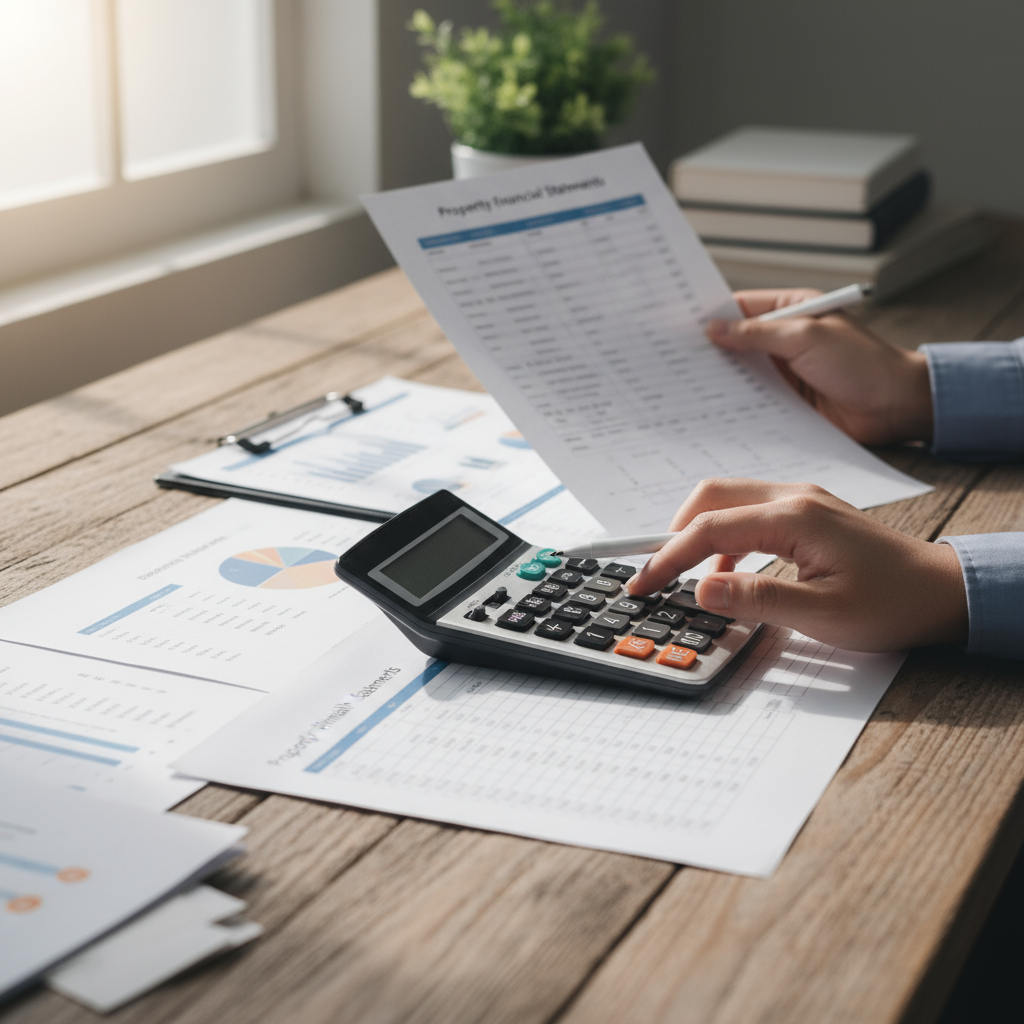
Table of Contents
Introduction
Thinking about diving into real estate investing? Smart move. But here’s the thing—you need to know if your money is actually working for you. That’s where Return on Investment (ROI) comes in. It’s not just some fancy finance term. ROI is your reality check, your profit compass, and honestly? Your best friend when it comes to separating the winners from the money pits.
Here’s why ROI matters so much in real estate. Picture this: you’re looking at two properties, both seem promising, but your gut isn’t enough anymore. ROI gives you the cold, hard facts about which investment will actually put money in your pocket. Real estate decisions are complicated—you’ve got financing to figure out, market ups and downs to weather, and rental income that might not always be reliable. When you know how to calculate and interpret ROI, these decisions become clearer. And when you combine that knowledge with strategies like investment property tax deductions, you’re not just making money—you’re keeping more of it.
But ROI isn’t just about crunching numbers (though we’ll do plenty of that). It’s about your peace of mind. Real estate investments mean serious money and ongoing headaches—I mean, expenses. Calculating ROI tells you whether all that effort and cash is building real wealth or just keeping you busy. Smart investors use different methods like cash-on-cash ROI and Cap Rate to get the full picture. You’ll want to understand how purchase price, financing terms, and those surprise maintenance bills all play into your bottom line.
The bigger picture? ROI doesn’t exist in a vacuum. Understanding broader concepts like how to calculate investment returns will sharpen your entire investment game. Plus, getting smart about tax strategies can seriously boost your actual returns. When you put these pieces together, you become the kind of investor who thrives instead of just survives in the real estate market.
What You’ll Learn in This Guide
We’re going to break down everything you need to know about ROI in real estate. No fluff, no confusing jargon—just practical knowledge you can use right away.
- Understanding the Basics: We’ll start with what ROI actually means, why it’s crucial for real estate success, and how it’s different from other metrics you might have heard about.
- Step-by-Step Calculation: You’ll learn the formulas that matter—basic ROI, cash-on-cash ROI, Cap Rate, and IRR. Don’t worry, we’ll make it simple and show you exactly when to use each one.
- Factors Influencing ROI: Discover what really moves the needle on your returns—from purchase price and financing choices to rental income, vacancies, and those pesky unexpected expenses.
- Common Mistakes to Avoid: We’ll cover the calculation errors and blind spots that trip up even experienced investors, plus give you practical tips to keep your estimates realistic.
What’s coming next? We’ll dig deep into each piece of the ROI puzzle and share strategies that can actually improve your returns. We’ll also talk about when it makes sense to get professional help (hint: sometimes it’s worth every penny). Getting these fundamentals down now means you’ll be ready to analyze any deal that comes your way.
Don’t forget to check out our insights on the advantages of owning a home as well—understanding all sides of real estate ownership will make you a smarter investor overall.
Ready to take control of your real estate investment future? Let’s dive in and turn you into the kind of investor who makes informed, profitable decisions with confidence.

Now that we’ve covered the basics of Return on Investment (ROI) in real estate, let’s get into the real meat and potatoes—how to actually calculate it and what makes those numbers tick. Real estate investing isn’t just about buying property and hoping for the best. (Though wouldn’t that be nice?) You need solid math and a clear understanding of what drives your returns. Think of this as your toolkit for making smart decisions, whether you’re looking for quick cash flow or building long-term wealth. We’re going to break down two game-changing topics: the actual methods for calculating ROI and the factors that can make or break your investment returns. Master these, and you’ll spot opportunities (and avoid costly mistakes) like a pro.
How to Calculate ROI in Real Estate Effectively
Here’s the thing about calculating ROI in real estate—it’s not just about dividing profit by what you paid. That’s like judging a restaurant by its menu without tasting the food. You need different formulas for different situations. Let’s start with the basic ROI formula—it’s your foundation. Simple division: net profit over initial investment. Clean, straightforward, and perfect for comparing properties side by side. But real estate? It’s rarely that simple. You’ve got financing, cash flow, taxes, and a dozen other moving parts.
That’s where specialized metrics come in handy. Take cash-on-cash return, for instance. This one focuses purely on the actual cash you get back compared to what you put in—no funny business with depreciation or other paper losses. It’s especially useful when you’re using loans (and let’s be honest, most of us are). Then you’ve got the heavy hitters: capitalization rate and Internal Rate of Return (IRR). Cap rate tells you how a property stacks up based on its annual income potential. IRR? That’s your crystal ball—it factors in timing and shows you what your money is really earning over time.
Key Calculation Methods for ROI
Let’s break down the main tools in your ROI toolkit and when to use each one:
- Basic ROI Formula: Divide your net profit by initial investment, multiply by 100 for a percentage. Net profit includes everything—rental income minus expenses, plus any profit from selling. It’s your starting point for evaluating any property deal. Master this first, then build from there.
- Cash-on-Cash ROI: This measures your annual pre-tax cash flow against the actual cash you invested. Skip the mortgage principal and depreciation here—just focus on real money in, real money out. Perfect for understanding how much cash your property actually generates. Want to maximize this? Check out investment property tax deductions that can boost your cash flow.
- Capitalization Rate (Cap Rate): Take your net operating income and divide it by the property’s current market value. Think of it as the property’s “interest rate”—higher cap rates typically mean higher returns (but possibly higher risk too). Great for comparing properties across different markets.
- Internal Rate of Return (IRR): This is where it gets sophisticated. IRR considers when money comes in and goes out, giving you a true picture of your investment’s performance over time. It’s your best friend for long-term investment planning and comparing different types of investments.
Here’s a practical example: say you calculate net profit by subtracting all your operating expenses and loan costs from your gross rental income. That number tells a story about your property’s performance. These calculations aren’t just academic exercises—they’re your roadmap to better investment decisions. And speaking of decisions, understanding what influences these numbers is just as important as calculating them.
Because here’s what every experienced investor knows: ROI calculations are just the beginning. The real skill lies in understanding what makes those numbers move up or down over time.
Key Factors Affecting ROI in Real Estate Investments
Real estate ROI is like a recipe with multiple ingredients—mess up one, and the whole dish suffers. You’ve got purchase price, financing terms, income stability, ongoing expenses, and a bunch of other variables all stirring together. Each one can make or break your investment. The smart money is on investors who analyze these factors upfront, not the ones crossing their fingers and hoping for the best. Want to forecast realistic returns? You need to understand these moving parts inside and out.
Financing deserves special attention here. How you finance a property can completely transform your ROI—sometimes in ways that surprise you. Interest rates, loan terms, down payment amounts—they all ripple through your monthly cash flow and overall returns. Add in property management challenges, rental income fluctuations, and expense management, and you’ve got a complex puzzle. But don’t worry—once you understand how economic factors, market appreciation, and tax implications fit together, you’ll have a complete picture for accurate ROI planning.
Important Factors Influencing ROI
Here are the big players that can significantly impact your real estate investment returns:
- Purchase Price and Financing: Everything starts here—your initial cost, down payment, closing costs, and loan terms set the stage for everything else. Good financing can supercharge your returns through leverage, but it can also amplify losses if things go sideways. Smart investors run multiple scenarios with different interest rates and loan terms before committing. The details matter more than you might think.
- Rental Income and Vacancy Rates: Steady rental income is the backbone of positive cash flow, but vacancy rates can kill your projections fast. One month without rent can wipe out several months of profit if you’re operating on thin margins. Professional property management and solid market research help keep occupancy high and rents competitive. Plan for vacancy—it’s not if, it’s when.
- Expenses and Maintenance Costs: Property taxes, insurance, repairs, landscaping, management fees—they never stop coming. The real killer? Unexpected major repairs that weren’t in your budget. A new roof or HVAC system can destroy your ROI calculations if you don’t have proper reserves. Smart investors budget for the unexpected and understand which expenses are tax-deductible.
- Market Appreciation and Tax Benefits: Property value appreciation doesn’t always show up in basic ROI calculations, but it can be a major contributor to your total returns. Tax benefits like depreciation and mortgage interest deductions can significantly impact your bottom line too. For the full scoop on maximizing these advantages, dive into investment property tax deductions.
The investors who consistently succeed? They’re the ones who account for all these variables upfront. They prepare for the unexpected, plan for variability, and optimize their portfolios with both eyes wide open. Combine solid ROI calculations with a thorough understanding of these influencing factors, and you’ve got the foundation for long-term real estate success.

Here’s the bottom line: if you’re serious about real estate investing, you absolutely need to understand ROI. It’s your financial compass—the one metric that cuts through all the market noise and tells you whether a deal actually makes sense. We’ve covered a lot of ground here, from the basic ROI formula to more sophisticated calculations like cash-on-cash return, cap rates, and IRR. Each one gives you a different lens to examine your property’s performance, and honestly? You’ll probably use different methods depending on what you’re trying to figure out.
But knowing the formulas is just the beginning. The real skill comes from understanding what drives those numbers—purchase price, financing terms, rental income, vacancy rates, and all those little expenses that add up faster than you’d expect. (Trust me, they always do.) When you grasp how these pieces fit together, you can spot potential problems before they become expensive mistakes. And sometimes, that means knowing when to call in a pro who can see things you might miss.
Ready to put this knowledge to work? Start by digging deeper into the bigger picture of real estate ownership. Check out our guide on the advantages of owning a home—it’ll show you how ROI fits into the broader benefits like stability, tax breaks, and long-term wealth building. And speaking of taxes, don’t sleep on learning about investment property tax deductions. Seriously, this stuff can make a huge difference in your actual returns by reducing what you owe Uncle Sam.
Want to expand beyond real estate? Our comprehensive guide on how to calculate investment returns will help you apply these same analytical skills to other investment opportunities. The more you understand about evaluating different types of investments, the stronger your overall portfolio becomes.
Look, real estate investing isn’t about getting rich quick—it’s about making smart, calculated decisions that build wealth over time. You’ve got the ROI foundation now. Keep learning, stay curious, and remember that every successful investor started exactly where you are right now. The difference is they kept going.
Frequently Asked Questions
-
What is a good ROI percentage for real estate?
- Generally, an 8-12% ROI is considered good, but it varies based on location, market conditions, and type of property involved.
-
How often should I calculate ROI?
- Calculate ROI before making a purchase and periodically after owning the property to monitor performance and adjust strategies as needed.
-
Does ROI account for property appreciation?
- Basic ROI often excludes appreciation. To get a complete view, include property appreciation alongside income and expenses in your calculations.
-
Can ROI be negative?
- Yes, if your expenses exceed income or if the property value declines, your ROI can be negative, indicating a loss on your investment.
-
Is cash-on-cash return the same as ROI?
- No, cash-on-cash return specifically looks at cash income relative to cash invested and is a component of the overall ROI calculation.
